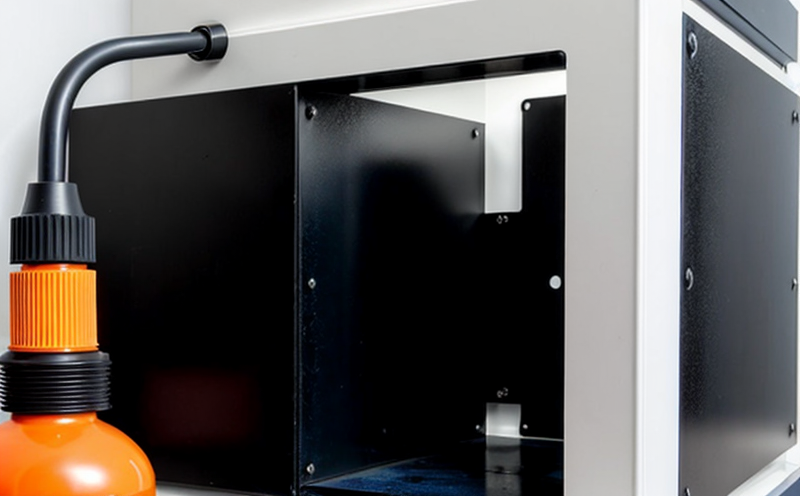ASTM D3363 Hardness Testing of Coatings by Pencil Method
The ASTM D3363 hardness test is a widely recognized method used to determine the hardness of coatings through pencil resistance. This testing procedure is particularly important in ensuring that nanocoatings and surface treatments meet the required performance standards for various industries, including automotive, aerospace, electronics, and construction.
This method involves scratching a series of pencils of varying hardness onto the coating sample. The hardest pencil that leaves no mark on the coating's surface indicates its hardness value. This non-destructive test is not only simple but also cost-effective, making it suitable for both quality control and research and development (R&D) processes.
Understanding this testing method requires a brief overview of how nanocoatings are applied to surfaces and why their hardness is critical. Nanocoatings offer enhanced durability by providing a protective layer that resists wear and corrosion. The ASTM D3363 test ensures these coatings meet the necessary standards for performance, thereby safeguarding the integrity of various products.
The testing procedure itself is straightforward but requires careful attention to detail. Specimen preparation involves selecting the appropriate coating sample, which should be clean and dry. The surface must also be free from any contaminants that could affect the test results. Once prepared, pencils with known hardness values are used in a sequential manner to scratch the coating's surface.
The testing apparatus includes pencils of varying grades ranging from 2H to 9H. Each pencil is carefully chosen based on its expected resistance level against the coating. The method specifies that the test should proceed until a pencil marks through the topmost layer of the coating, indicating the hardness limit. This process provides an accurate measure of the coating's resistance and durability.
Acceptance criteria for this test are critical to ensure the reliability of the results. Coatings that fail to meet these standards may not perform as expected in real-world applications. For instance, a coating used in automotive parts should withstand the environmental stresses encountered during use. ASTM D3363 helps ensure coatings meet these stringent requirements.
Understanding the application context is essential for comprehending why this test is vital. In sectors like aerospace and electronics, where reliability and longevity are paramount, ensuring that nanocoatings adhere to specific hardness levels is crucial. This testing method ensures that manufacturers can deliver products that not only meet but exceed industry standards. By using ASTM D3363, quality managers, compliance officers, R&D engineers, and procurement specialists can confidently verify the performance of their coatings.
| Applied Standards | Details |
|---|---|
| ASTM D3363-18 Standard Test Method for Determining the Hardness of Coatings by Pencil Method | This standard outlines the procedure for determining coating hardness using pencils. |
| ISO 15208:2010 Surface Coating - Determination of Hardness by Scratch Resistance Testing Using Graphite Pencils | An international standard that specifies the use of graphite pencils to determine coating hardness. |
The applied standards ensure consistency and accuracy in testing, making ASTM D3363 a reliable method for evaluating coating hardness. This table highlights some key standards used in this process.
Applied Standards
| Standard Code | Description |
|---|---|
| ASTM D3363-18 Standard Test Method for Determining the Hardness of Coatings by Pencil Method | This standard provides a detailed procedure for measuring coating hardness using pencils. It ensures that tests are conducted in a standardized manner, which is crucial for consistency and reliability. |
| ISO 15208:2010 Surface Coating - Determination of Hardness by Scratch Resistance Testing Using Graphite Pencils | This international standard outlines the use of graphite pencils to determine coating hardness. It is widely recognized for its accuracy and repeatability. |
The application of these standards ensures that tests are conducted in a consistent and reliable manner, providing accurate results that can be trusted across various industries.
Benefits
- Non-destructive testing: The pencil method does not damage the coating sample, allowing for repeated measurements if necessary.
- Cost-effective: This test is relatively inexpensive compared to other hardness tests, making it accessible to a wide range of organizations.
- Quick results: The ASTM D3363 method provides rapid feedback on coating performance, which is invaluable during quality control processes.
- Precision: By using pencils with known hardness values, the test ensures precise and repeatable results.
The benefits of this testing method extend beyond cost savings; it also enhances product reliability and customer satisfaction by ensuring that coatings meet or exceed industry standards.
Use Cases and Application Examples
| Application Example | Description |
|---|---|
| Aerospace Coatings | Ensure durability of coatings used in aircraft components to withstand harsh environmental conditions. |
| Electronics Manufacturing | Verify the hardness and resistance of coatings on electronic devices to prevent damage from external elements. |
| Automotive Parts | Evaluate the protective properties of coatings used in automotive parts to enhance longevity and performance. |
| Bio-Medical Devices | Determine the hardness of coatings on medical devices to ensure they are resistant to wear and tear during use. |
The versatility of ASTM D3363 allows it to be used across various industries, ensuring that nanocoatings meet the necessary performance standards for durability and protection.





